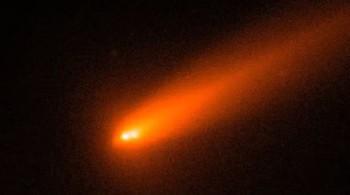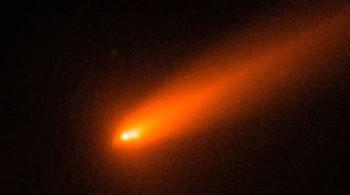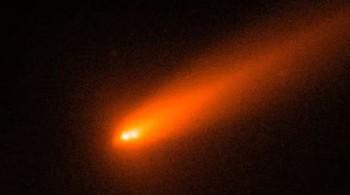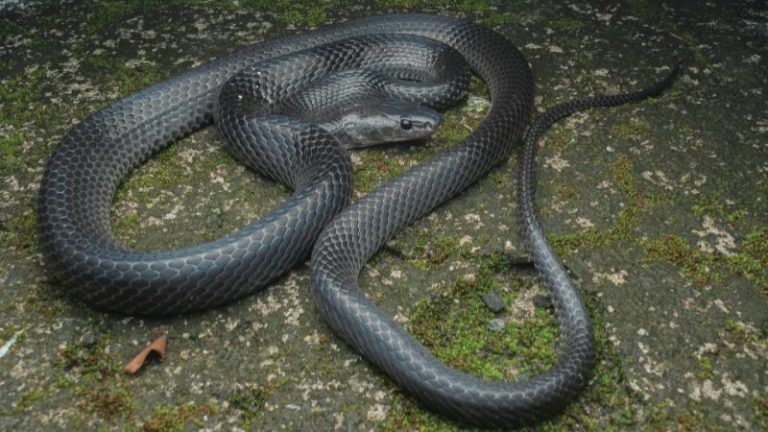
Comet C/2025 K1 (ATLAS) breaks into 3 after coming close to Sun
In a dramatic and rare celestial event, Comet C/2025 K1 (ATLAS) has broken into three pieces after swinging too close to the Sun. This extraordinary occurrence was captured by astronomers using Italy’s Copernicus telescope, providing a stunning visual representation of the comet’s fragmentation. The comet’s nucleus became unstable after it passed close to the Sun on October 8, resulting in the separation of two large chunks and a smaller third piece.
Comet C/2025 K1 (ATLAS) was first discovered in May 2025 by the Asteroid Terrestrial-impact Last Alert System (ATLAS) survey. Initially, it was thought to be a relatively small and unremarkable comet, but as it approached the inner solar system, astronomers began to take notice of its unusual behavior. As the comet drew closer to the Sun, its ices began to vaporize, creating a bright tail of gas and dust that stretched millions of kilometers into space.
However, it was not until the comet’s close encounter with the Sun on October 8 that the dramatic events unfolded. As the comet approached the Sun, the intense heat and radiation caused its nucleus to become unstable, leading to a fragmentation event. This event resulted in the comet breaking into three distinct pieces, with two large chunks drifting approximately 2,000 kilometers apart. A smaller third piece was also observed, located to the left of the pair.
The images captured by the Copernicus telescope in Italy provide a breathtaking view of the comet’s fragmentation. The two large chunks of the comet’s nucleus are clearly visible, with a bright tail of gas and dust streaming behind them. The smaller third piece is also visible, although it is significantly fainter than the two larger chunks. The images are a testament to the incredible capabilities of modern telescopes and the dedication of astronomers who work tirelessly to capture these rare and awe-inspiring events.
The fragmentation of Comet C/2025 K1 (ATLAS) is a significant event for astronomers, as it provides a unique opportunity to study the internal structure and composition of comets. By analyzing the debris left behind by the comet, scientists can gain valuable insights into the formation and evolution of our solar system. Additionally, the study of comets like C/2025 K1 (ATLAS) can help us better understand the potential risks and consequences of comet impacts on Earth.
Comets like C/2025 K1 (ATLAS) are remnants from the early days of our solar system, and their composition and structure can provide valuable clues about the conditions under which our solar system formed. By studying the fragmentation of comets, scientists can gain a better understanding of the physical processes that shape these icy bodies and how they interact with the Sun and other celestial objects.
The break-up of Comet C/2025 K1 (ATLAS) is also a reminder of the dynamic and unpredictable nature of our solar system. Comets are notoriously difficult to predict, and their behavior can be influenced by a wide range of factors, including the gravitational pull of the Sun and other planets, as well as the internal structure and composition of the comet itself.
As the comet’s fragments continue to drift through space, astronomers will be closely monitoring their trajectory and behavior. The study of Comet C/2025 K1 (ATLAS) and its fragmentation will provide a unique opportunity for scientists to gain a deeper understanding of comets and their role in our solar system. The stunning images captured by the Copernicus telescope are a reminder of the awe-inspiring beauty and complexity of our celestial neighborhood, and the many secrets that still remain to be uncovered.
In conclusion, the break-up of Comet C/2025 K1 (ATLAS) is a significant event that provides a unique opportunity for scientists to study the internal structure and composition of comets. The stunning images captured by the Copernicus telescope are a testament to the incredible capabilities of modern telescopes and the dedication of astronomers who work tirelessly to capture these rare and awe-inspiring events. As we continue to explore and study our solar system, events like the fragmentation of Comet C/2025 K1 (ATLAS) remind us of the dynamic and unpredictable nature of our celestial neighborhood, and the many secrets that still remain to be uncovered.






